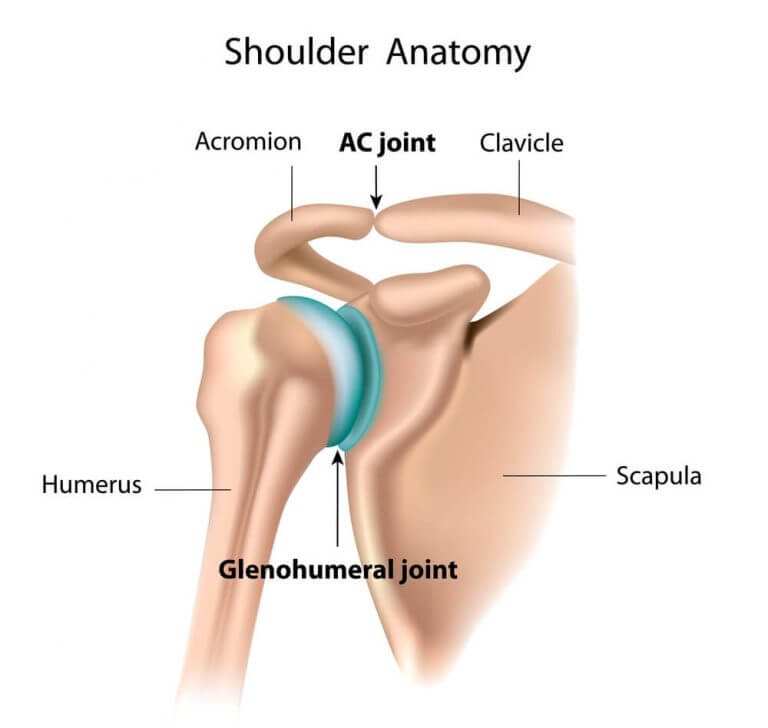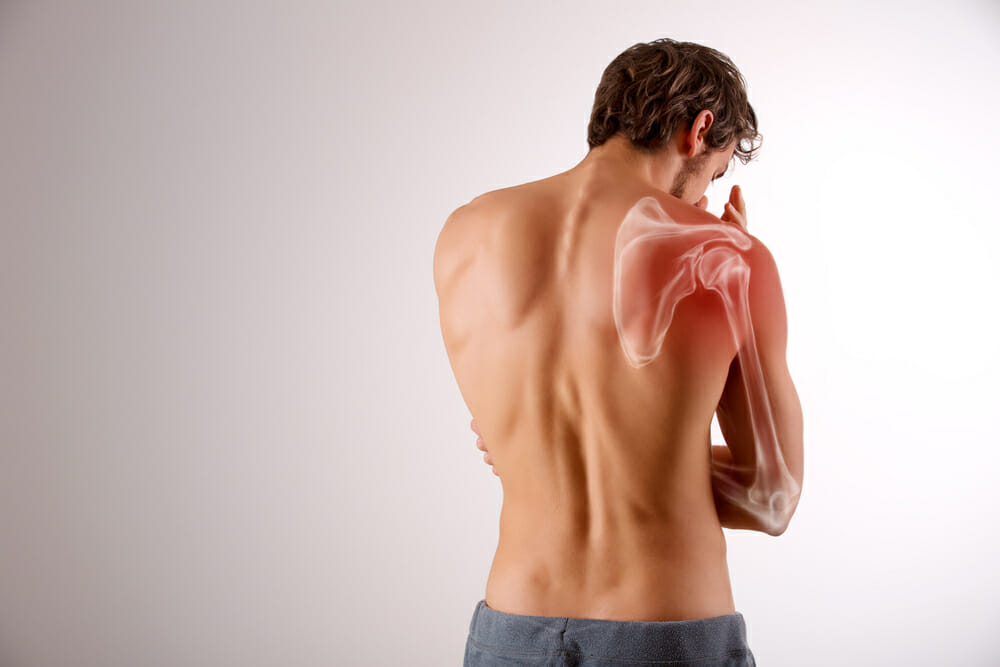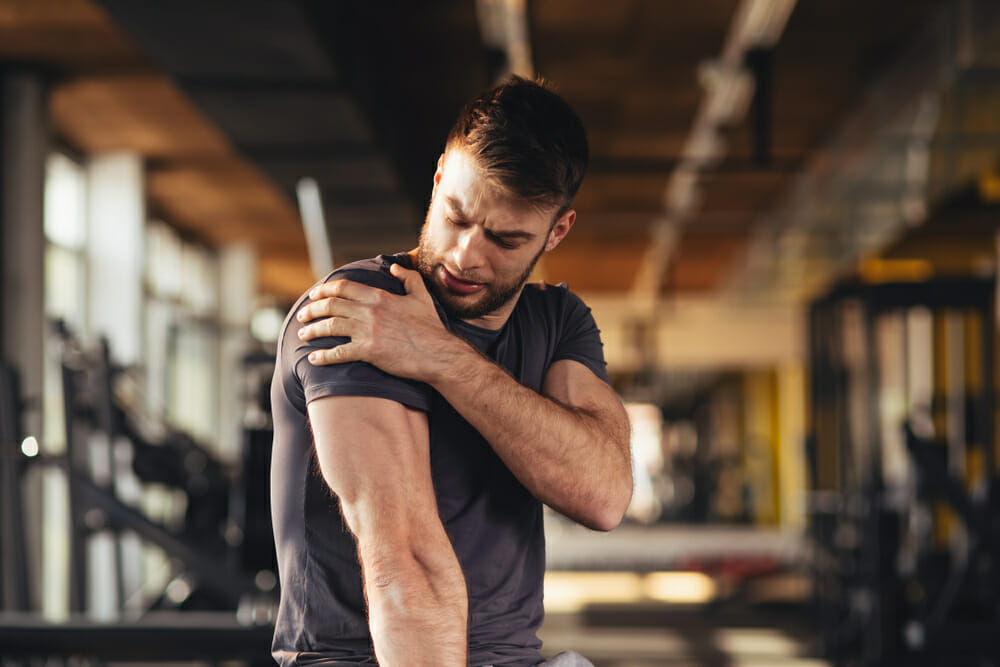
Painful shoulder conditions are very common and can limit your arm movement, affecting daily activities. Shoulder pain is caused by injuries that affect your shoulder joint, tendons, ligaments, muscles and/or cartilage. Your shoulder is very prone to injuries due to its high degree of flexibility, therefore making it less stable compared to other joints in the body.
To understand how vulnerable your shoulder is to injury, we need to first understand some basic shoulder anatomy:
Your shoulder is made up of three bones:
- Upper arm bone – the humerus
- Shoulder blade – the scapula
- Collarbone – the clavicle
There are also two joints in the shoulder that allow movement, these are:
- The acromioclavicular joint (AC Joint) – the junction between the acromion and the clavicle
- The glenohumeral joint – the ball and socket joint

The Glenohumeral Joint
It’s important to understand a little more about this joint. This joint is the ball and socket joint between the scapula and the humerus. It is the major shoulder joint that provides a wide range of arm movements. The glenohumeral joint is the most mobile joint in the body; however, this mobility comes at the cost of stability.
The glenohumeral joint is made up of the rounded head of the humerus bone (the ball) which rests in the cup-like glenoid fossa (socket) on the scapula. Surrounding this joint is a loose joint capsule which consists of a number of ligaments as well as fluid-filled sacs called bursae (singular – bursa).
The socket of the shoulder joint is quite shallow, this is essential to allow such a large range of motion. However, due to this wide range of mobility, the shoulder joint is less stable compared to other joints, making it vulnerable to injury or pain.
What Are The Reasons For Your Shoulder Pain?
There are many causes of shoulder pain, some of the most common include:
- Muscular pain
- Burstitis
- Referred pain from the neck
- Rotator cuff injury
- Frozen shoulder
- Dislocation
- Arthritis
- Fractures
How Can A Physiotherapist Assist With Shoulder Pain?
Treating and managing a shoulder injury is usually successful with physiotherapy. Depending on your condition you often have two options: surgery or a non-surgical approach. Physiotherapy for shoulder pain can help in both cases.
How Can A Physio Help?
Initially, physiotherapy for shoulder pain focuses on relieving pain and reducing inflammation. As your shoulder begins to heal, you can move on to exercises that will increase range of motion, improve muscle strength and improve control and stability of your shoulder. Strengthening and stabilising the shoulder is a vital part of physiotherapy for shoulder pain. This helps to reduce the risk of further injury or aggravation.
Physiotherapy for shoulder pain is also beneficial after surgery. After shoulder surgery, a physio can provide rehabilitation to help you to regain your shoulder’s strength, range of movement and function. Your physio understands which exercises are suitable for strengthening and rehabilitating your shoulder after surgery.
Shoulder pain is one of the most common problems seen by physios due to the relative instability of the shoulder joint combined with the demand on our arms for frequent daily activities. The shoulder joint is a common site for injuries and pain but physiotherapy for shoulder pain is an effective treatment to reduce symptoms and return your shoulder joint back to its optimal function.




